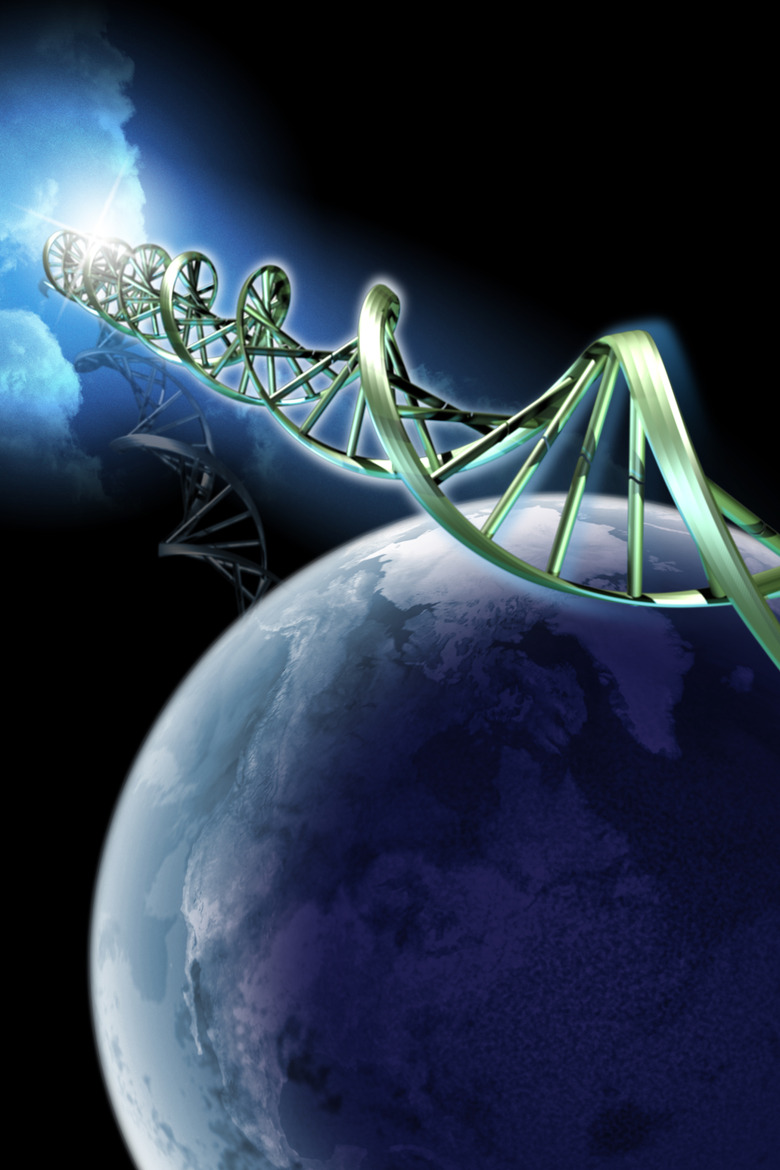What Maintains Genetic Continuity?
You can think about genetic continuity in many ways. In one sense, it refers to the consistent replication of genetic information from a parent cell to two daughter cells. Another perspective centers on the continuity of parental traits in offspring. At a higher level, you can view the effects of evolution upon the gene pool within a species population. Ultimately, all of these ideas depend on DNA, or deoxyribonucleic acid, which maintains genetic continuity but also introduces genetic change.
DNA and You
DNA and You
Your physical, biochemical and, to some extent, behavioral traits stem from your genetic material, housed in the 23 pairs — maternal and paternal sets — of DNA-laden chromosomes in each of your body cells. The genes, comprising about 2 percent of your DNA, code for the proteins that express your traits. Before a cell can divide, it must duplicate the chromosomes so that each daughter cell receives a full complement. The cell begins this process by replicating its DNA, creating two copies of each DNA double-stranded molecule. The replicated strands form twin arms, called chromatids, on each chromosome. Accurate replication of DNA is the basic key to genetic continuity.
Mitosis: The Great Divide
Mitosis: The Great Divide
A cell's nuclear membrane encloses the chromosomes in a hospitable environment. After DNA replication, a cell begins nuclear division, a process called mitosis. At the start of this process, the double-chromatid chromosomes thicken and condense, and the cell's nuclear membrane begins to disintegrate. Microtubules anchored to structures known as centrosomes grab each chromosome and align it along the cell's central axis. The chromatids then split, creating the two sets of daughter chromosomes. As mitosis ends, each developing daughter cell receives one set of chromosomes. The nuclear membranes return as the cell divides through the process of cytokinesis. In this way, mitosis ensures genetic continuity across generations of cells.
Meiosis: The Sexy Alternative
Meiosis: The Sexy Alternative
Genetic continuity should not be confused with a lack of variation. The fact that you resemble both your parents but are identical to neither is largely due to the variation introduced by meiosis, which produces sex cells, or gametes. Over the course of two cell cycles, special cells undergo meiosis and form gametes containing only one set of chromosomes, a mixed set containing a single copy of each chromosome randomly supplied from either parental set. Meiosis adds even more variability by crossing over the maternal and paternal copies of some chromosomes, exchanging portions of DNA and creating essentially new chromosomes with unique genetic content. At fertilization, the random mating of egg and sperm restore the full number of chromosomes that control the traits of the offspring.
Mutants Can Be Welcome
Mutants Can Be Welcome
Mutations are spontaneous changes in the information content of a gene. If the mutation occurs in a gamete, offspring might inherit the mutation. Some mutations are beneficial and can create an evolutionary advantage, even leading to new species. Other mutations go unnoticed, but some can be harmful and create possibly fatal or debilitating genetic defects. Evolution and natural selection weed out unwanted mutations, helping to ensure the genetic continuity of traits that help a species survive.
Cite This Article
MLA
Finance, Eric Bank, MBA, MS. "What Maintains Genetic Continuity?" sciencing.com, https://www.sciencing.com/maintains-genetic-continuity-23595/. 24 April 2017.
APA
Finance, Eric Bank, MBA, MS. (2017, April 24). What Maintains Genetic Continuity?. sciencing.com. Retrieved from https://www.sciencing.com/maintains-genetic-continuity-23595/
Chicago
Finance, Eric Bank, MBA, MS. What Maintains Genetic Continuity? last modified August 30, 2022. https://www.sciencing.com/maintains-genetic-continuity-23595/
